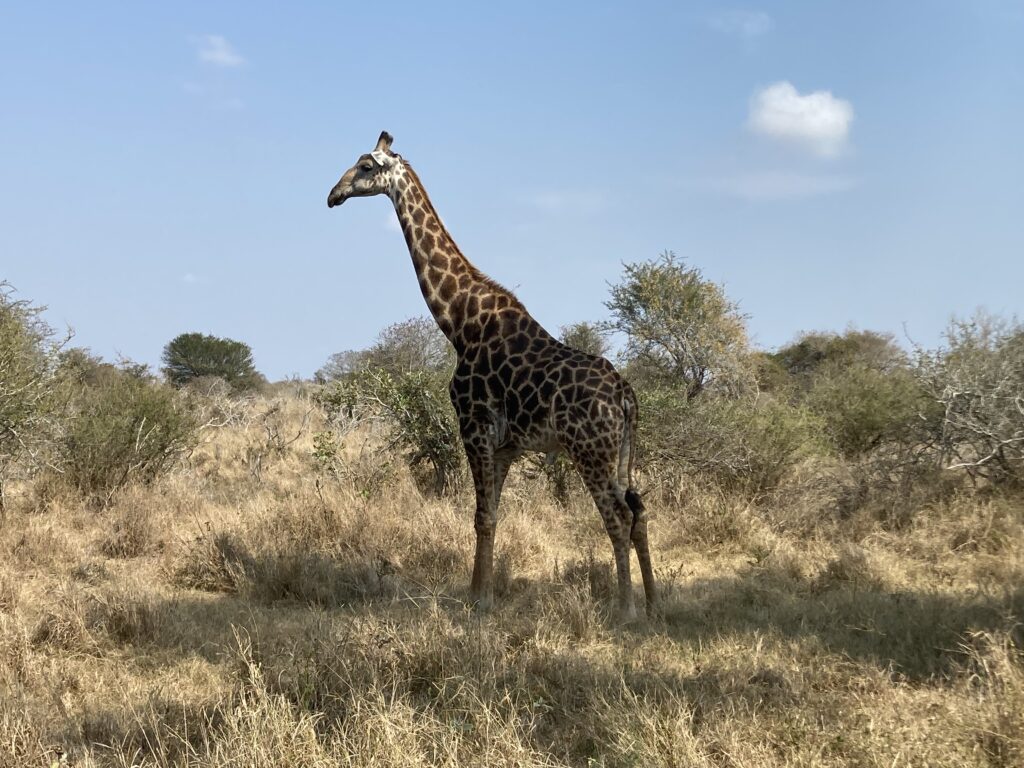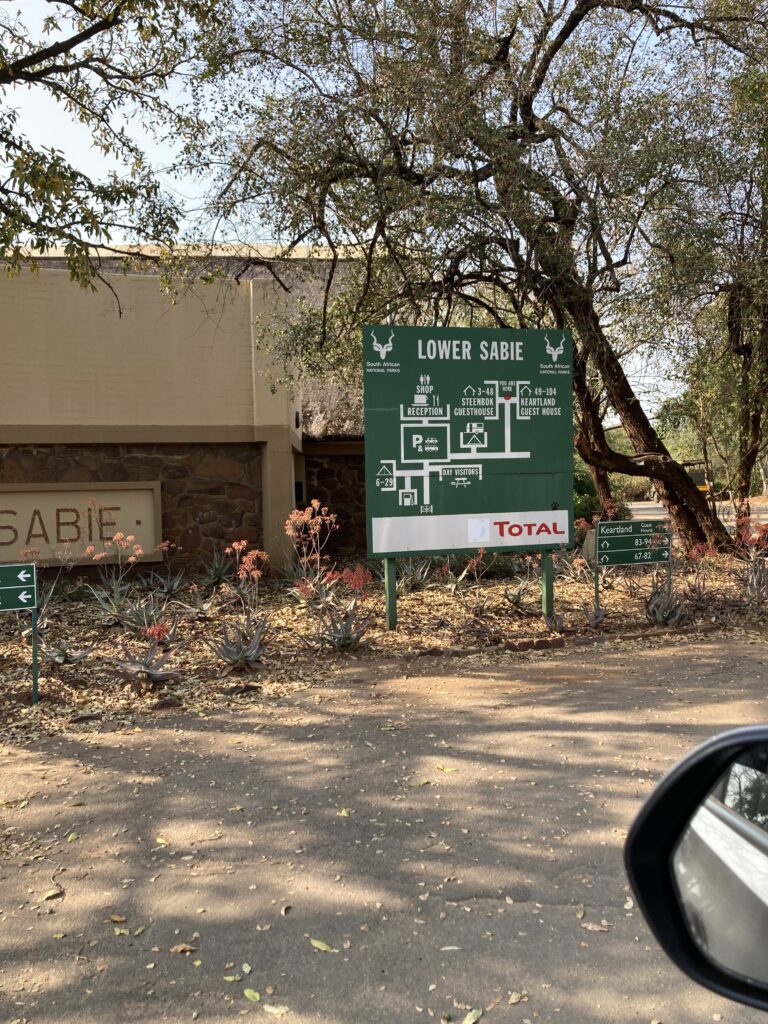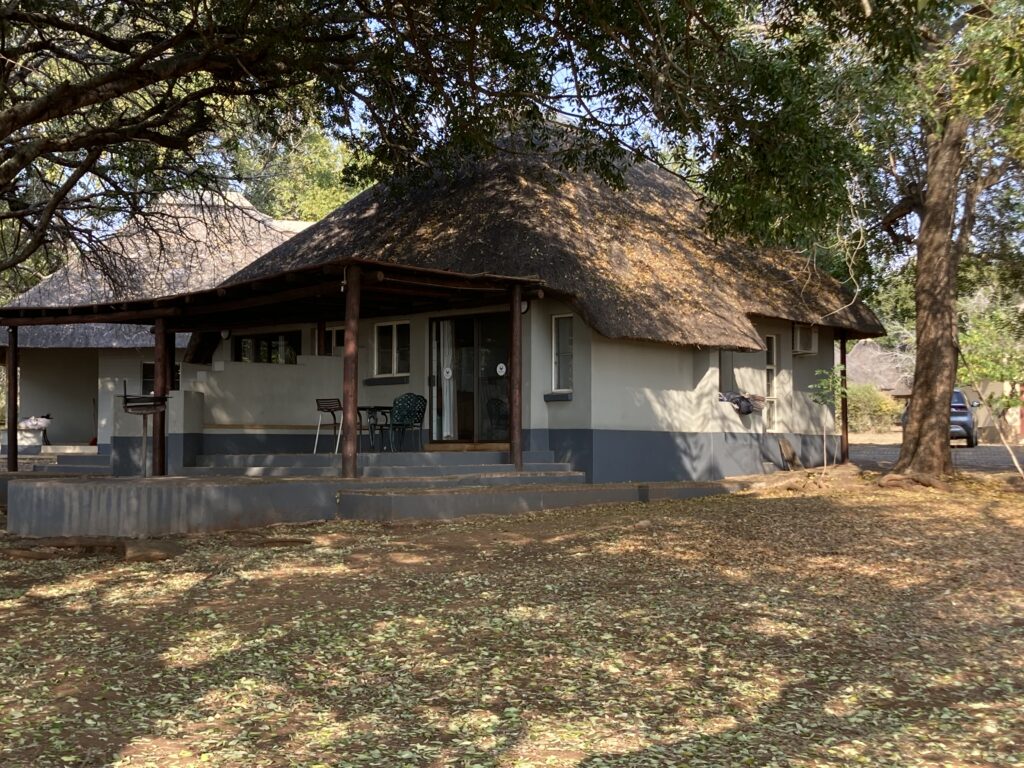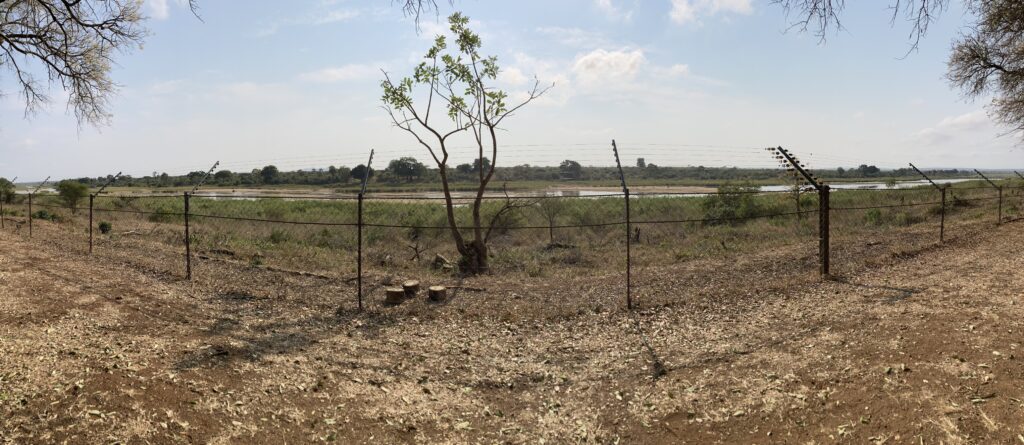
We haven’t even entered Kruger National Park and we’ve already seen three elephants behind the fence at the Crocodile Bridge gate. Just five minutes past the entry, we spot giraffes in the distance, followed by heaps (not the official name…) of impalas, a type of antelope with twisted dark horns sharp as ice picks, and brown, white and black fur.
All the animals we saw
The dry terrain is dotted with trees and not too hilly. It’s sparse enough to see over a distance, but we don’t need to look far. The zebra wander straight across the paved (“tarred”) road in front of us, and warthogs munch just off the curb. The land along the sides of the road throughout much of the park is black with white spots from intentional burning to allow short-rooted plants to regrow, and not let long-rooted ones take over. This is better than an uncontrolled fire in a dry season with the added bonus of attracting more flora and fauna to the nutrient rich burned area, says our Sunset Drive guide, Lunga, later that evening. It also makes it easier to see further into the bush, where foliage is thin near this gate, but thickens when we get past our Lower Sabie restcamp that evening on our guided van tour for the Big Five.
Two hours into our tour, the sunset has set and Lunga seems a bit miffed that all we’ve seen are elephants, giraffes, zebras (“donkeys in pyjamas,” he says) and hordes (again, not the term) of impalas. But we’re captivated by his stories of how a zebra calf is birthed feet first and why we can’t drive between a mama zebra on the left side of the road and a newborn calf on the right. (The calf will get spooked and could run off and be easy prey for a predator.) So we wait. Eventually the calf hesitantly walls across the road to mom, breaking into a canter once it clears the 20-seat open-air van.
We’re okay with not having seen any cats yet (lions and leopards being two of the “Big Five,” along with African buffalo, rhinoceroses and elephants). We’d already seen hippopotamuses spraying and splashing occasionally in the river by Crocodile Bridge earlier, though mostly they just waded, their heads bobbing in and out of the water (while three lazy crocodiles on the opposite side minding their own business). We’d also seen more than 20 elephants, big and small, marching by the water.
But night is when the action happens – it’s hunting time – and Lunga seemed determined to spot some of these animals that he knows tourists come to see. We’ve got binoculars that we borrowed from our hostel in Waterval Boven (Emgwenya), but some people come with their own spotlights and Lungs asks them to aim straight out from the sides of the van so the light isn’t reflected in his side mirrors.
With not much time left on the tour, someone yells “stop!” We see a spotted hyena and think that’s going to be the highlight. But shortly after, on the return to Lower Saboe, three white rhinoceroses meander across the road, and we feel lucky. Lunga says they’re rarer than lions, but he may just have been trying to make us feel better for missing a lion.
But then the people on the left side of the truck yelled “Stop!” again. Lunga hushes them immediately because they’ve spotted two leopards, likely mating just off the side of the road. You need to be quiet or they’ll walk away, he tells us. We all hush. The animals stand and walk away a little. Lunga says they’ll likely mate again on the road in 15 minutes if we wait, but I can’t tell if he was serious or making another joke, and the people in the back ask that he advance the truck so they could take photos, which requires a lot of noise, so when the leopards walk off, we head back to camp, more than satisfied.
We’d seen something special, it seemed. We definitely didn’t tip Lunga enough. He’s an enthusiastic professional guide and expert. I’d even read about him in reviews for the camp site, (or at least someone who also went by the first name “Stop!” and last name “Reverse”, because his “name is not Giraffe or Lion!”, he jokes (which is what tourists tend to shout when they see those animals instead of yelling something helpful like “Stop!”).

About Lower Sabie Rest Camp at Kruger Park
Unlike some reviews we’d read, our Bungalow was very clean (#23), so don’t believe some of those reviewers.

The restaurant catered to my gluten intolerance by giving me plain chicken skewers and sweet potato fries, which I slathered in preservative-free tomato sauce (the high end ketchup brand here boasts that no MSG, etc is added, which includes no gluten, unlike other brands I’d seen at grocery stores) and Tabasco sauce (just vinegar, chilies and salt). We had time to grab a quick meal after returning from the sunset drive at 7:30 to grab food before the restaurant closed at 9. It’s a long day for the restaurant workers, I imagine, who must be housed on site during the season because you one enters or exists the park or the camp once it’s dark.
But the best feeling of our stay in Lower Sabie, came sitting outside our bungalow on one of the wooden benches that line the fence overlooking the slow, narrow river.

Birds and a woodpecker went about their business around us and we stared into the hazy end-of-day light before our sunset drive at 4:30 on the shortest day of the year in South Africa. I felt the most complete calm I’d felt in ages, looking at the open expanse of river, nothing around, no mosquitos, a bit more humidity than Emgwenya where we’d been rock climbing, which did wonders for my chapped lips. I see why people stay here for weeks or months.
We leave today. Along with a locally made stuffed lion made with recycled plastic bottles for my niece, the souvenir I want is that feeling of peace.
Leave a Reply